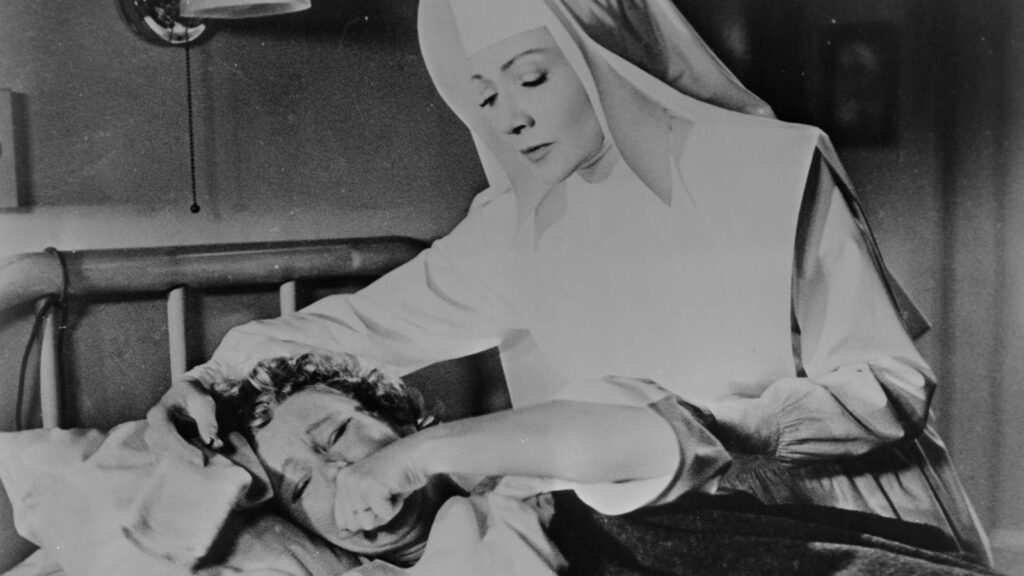
In Douglas Sirk’s melodramatic thriller Thunder On The Hill (1951) Godliness and faith are entirely the providence of women. What’s remarkably proto-feminist is that this enclave of the faithful is pitted against a man who embodies so many of the most toxic attributes of patriarchal society. When a flood in Norfolk England strands the soon to be executed Valerie Cairns (Ann Blyth) at a nunnery she finds an unlikely champion of her innocence in Sister Mary (Claudette Colbert). Soon Sister Mary has enlisted the aid of her fellow nuns and hospital workers to reveal the real perpetrator of the crime for which Valerie Cairns is to be executed, and it’s none other than Dr. Jeffreys (Robert Douglas), the medical chief at Sister Mary’s hospital.
Thunder On The Hill examines guilt, innocence, and the communities of those who have survived a trauma. It’s these links that tie Sister Mary and Valerie Cairns together from the start. Their union, which ultimately exposes Dr. Jeffreys, is constantly tried by Church doctrine, British law, and patriarchal assumptions about their sex. This connection between women in the face of a society that undermines the independence, sanity and basic human rights of women will form the core of Sirk’s later masterpiece Imitation of Life (1959). But what will explode across the screen as an epic exists in Thunder On The Hill as a claustrophobic, psychological drama.
It’s easy to forget that Douglas Sirk had a pair of frequent collaborators in front of the camera prior to his long relationship with Rock Hudson. During Sirk’s earliest days working for Universal Studios Claudette Colbert and Barbara Stanwyck both had fruitful collaborations with the famed director. Thunder On The Hill boasts one of Colbert’s best and most complex performances as Sister Mary.
Thunder On The Hill was originally a stage play by Charlotte Hastings that was purchased by Universal Pictures. In his direction Sirk makes the bold choice to keep the acting highly theatrical while the sets maintain a style best described as Expressionistic. The landscape and locations, particularly when Sister Mary navigates a foggy flooded byway, reflect the dramatic subtext of the characters. It’s the same basic tactic that one sees in Film Noir, but here Sirk uses it in service of what amounts to a thrilling “weepie”.
This begins to explain why Kino-Lorber included Thunder On The Hill in their Film Noir Collection. As a whole Thunder On The Hill is an amalgamation of a number of different genres and dramatic strategies. Yet, the film itself is still firmly planted within the broader sort of “catch-all” genre of the “woman’s picture”. After all, Thunder On The Hill is about women and addresses, rather explicitly for 1951, the issues and relationships that women faced in society. This one is a “must see”.
